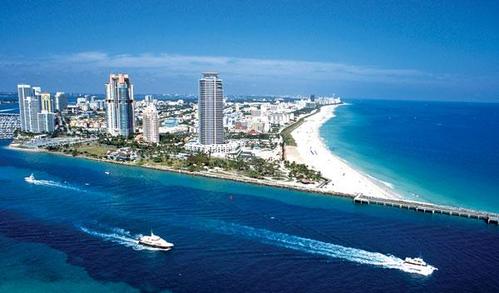
Weather In Miami In March: Travel Tips
Do you want to travel to Miami in March? Are you worried about the weather? What’s the weather in Miami in March? I will show more details about the average in Miami in March. Continue reading…
Table of Contents
Temperature In Miami In March
81 °F March average high 27 °C
66 °F March average low 19 °C
20 days 80 °F max. or more (27 °C)
23 days 70 °F min. or less (21 °C)
Nearly every day in March, Miami experiences temperatures that are above 70 °F (21 °C). On average, one or two days per year have temperatures of 90 or more degrees Fahrenheit (32 or more degrees Celsius).
On an average of seven nights per month, the temperature drops to or below 60 degrees Fahrenheit (16 degrees Celsius). A March night occasionally drops to 50 degrees Fahrenheit (10 degrees Celsius).
Sun In Miami In March
74 % sunshine
9 days of clear skies
In Miami, 74 percent of the daylight hours, or 276 hours total, are spent reflecting off the ground. This is true on average in March. The sky is typically mostly clear with no more than 30% cloud cover on nine days this month.
In Miami in March, the average daily amount of sunlight is 12 hours and 1 minute. The first day of the month has the least amount of daylight, 11 hours and 39 minutes. Day length has increased to 12:24 from sunrise to sunset by the end of the month. From year to year, these lengths can change by a minute or two.
Read about: Yosemite Weather In March: Is It A Good Time To Visit? – Global Travel Idea
Moon In Miami In March
The relevant lunar data for March 2022 is condensed into the figure below. The colorful sections show when the moon is over the horizon. The horizontal axis represents the day, the vertical axis represents the hour of the day. Key Moon phases are denoted by the vertical gray (new Moons) and blue (full Moons) bars. Each bar’s label includes the time and date when the phase was recorded, as well as the moon’s rise and set times for the closest time interval during which the moon was above the horizon.
Read about: Weather In Miami In November: How Is The Weather – Global Travel Idea
Rainfall In Miami In March
We display the rainfall accumulated over a sliding 31-day period centered on each day in order to highlight variety throughout the month rather than just the monthly average.
Miami’s sliding 31-day average rainfall for the month of March rises steadily, from 1.7 inches at the beginning of the month to 2.1 inches at the end of the month (rarely exceeding 3.9 inches or falling below 0.5 inches).

Storms In Miami In March
2 days of rainfall of 0.5 inches (13 mm) or more
2 days with thunderstorms in March
The weather data here are long-term averages provided by the US National Centers for Environmental Information (NCEI). Normal ranges for temperature, precipitation, and humidity are from 1991 to 2020; for thunderstorms, the range is from 1961 to 1990.
Humidity In Miami In March
The dew point serves as the foundation for determining the comfort level of humidity since it controls whether sweat will evaporate from the skin and cool the body. Higher dew points seem more humid, whereas lower dew points feel dryer. While the temperature may decrease at night, a humid day is generally followed by a muggy night because dew point changes more slowly than temperature, which frequently varies dramatically between night and day.
Miami’s likelihood of having a muggy day during any given week increases throughout the month of March, ranging from 35% to 45%.
Solar Power In Miami In March
The total daily incident shortwave solar radiation that strikes the ground over a large area is covered in this section, taking into consideration seasonal variations in day length, the Sun’s position above the horizon, and absorption by clouds and other atmospheric components. UV and visible light both fall within the category of shortwave radiation.
Over the course of the month of March, Miami’s average daily incident shortwave solar energy increased by 0.9 kWh, from 5.4 kWh to 6.3 kWh.
Clouds In Miami In March
The amount of cloud cover in Miami is essentially steady during the month of March, with the proportion of time the sky is overcast or mainly cloudy staying at around 31%. On March 7, there is a 29 percent probability of gloomy or mainly cloudy weather.
March 7 has a 71 percent chance of being clear, mostly clear, or partly overcast, making it the clearest day of the month.
For comparison, the likelihood of overcast or mostly cloudy weather is 68 percent on July 7, the cloudiest day of the year, while the chance of clear, mostly clear, or partly cloudy skies is 71 percent on March 7, the clearest day of the year.
Precipitation In Miami In March
A day that has at least 0.04 inches of liquid or liquid-equivalent precipitation is considered to be wet. Starting the month at 17 percent and concluding it at 23 percent, Miami’s risk of a wet day in March is rising quickly.
For comparison, the probability of a wet day is 62 percent on August 24 and 15 percent on January 31 of each year.
Topography In Miami In March
Miami’s geographic coordinates for this report are 25.774 degrees latitude, -80.194 degrees longitude, and 7 feet elevation.
With a maximum height variation of 36 feet and an average elevation above sea level of 5 feet, the topography within two miles of Miami is relatively flat. Additionally, the area nearby is practically flat (36 feet). A 50-mile radius is also essentially flat (82 feet).
Within two miles of Miami, there are artificial surfaces (64%) and water (36%), within ten miles, there are artificial surfaces (49%) and water (48%) and within fifty miles, there are water (53%) and herbaceous vegetation (31 percent ).
Conclusion
In the state of Florida, Miami is near the Tropic of Cancer. It has a tropical climate, which means it is warm all year long. If you’re traveling in March, which is also the driest month of the year, you can anticipate warm temperatures and a lot of sunshine. This is due to the fact that Miami’s wet season is now past, making March a fantastic time to travel there. If it rains, it usually doesn’t last for very long. You’ll stay cool and cozy thanks to the North Atlantic Ocean.


